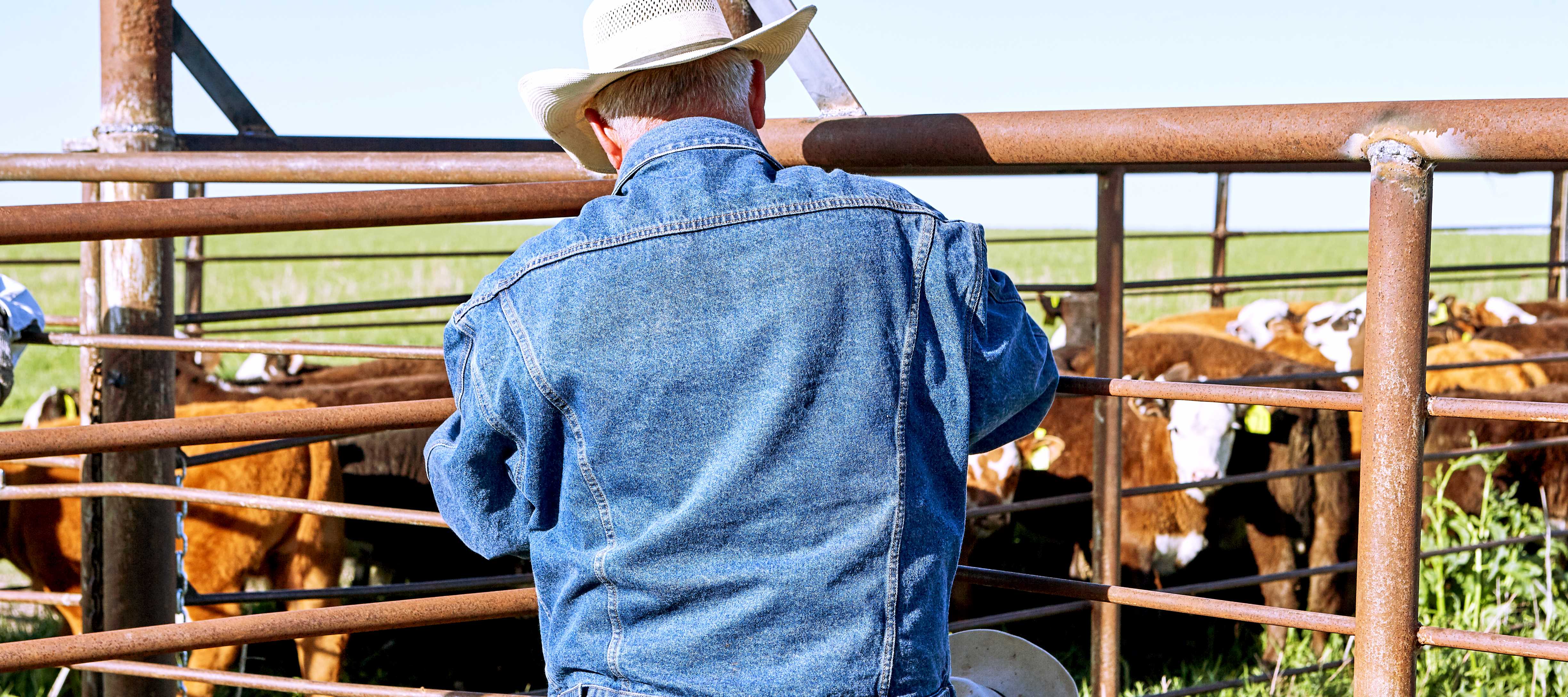What Does Animal Handling Look like on the Farm & at the Livestock Auction

Animal handling, in general, should benefit the farmer and the animal. Safety for both is essential. At Cattlemen’s Livestock Auction, we also want to positively contribute to the welfare of your animal. Here we highlight common hazards and how to make changes to ensure safety on the farm.
Common Cattle Hazards
Accidents with beef cattle tend to occur while the person is handling the livestock. Beef cattle are known for an even disposition but can be startled and inflict injury to anyone in their way.
Groups of animals are easy to “spook.” Bovines can see nearly 360 degrees without moving their heads. Therefore, a quick movement behind is just as apt to “set them off” as a frontal one.
Dairy cows may look content in the pasture, but they are generally more nervous than other animals. As creatures of habit, they are easily startled, especially by strange noises and persons. Once you have moved dairy cattle into milking stalls, give them a moment to adapt to the new environment before beginning your operation. Always announce your presence when approaching a cow. Gently touch the animal rather than let the first contact be a bump or shove.
When moving cows into a constraining space such as a milking parlor stall or squeeze chute, give them time to adjust before starting the work at hand. If a cow tends to kick, consider using a hobble. Don’t permit workers to talk loudly, clatter and bang equipment around or handle cows roughly. Gentle cows can become dangerous when defending calves. This fact should be pressed to children, visitors and new workers.
Special facilities should be provided so that a bull can be fed, watered, exercised and used for breeding without a handler coming into direct contact with him. Although cattle are not apt to attack you, they can overwhelm you with their size and weight. Leave yourself an “out” when trying to corner or work with cattle.
Keep small children and strangers away. Beware of the area in front of the rear leg when working with cattle. They tend to kick forward, then back. Pulling the kicking leg forward can be used as a means of preventing a kick while working in the udder or flank area range.
Preventing Animal Injuries
Proper equipment and handling facilities for your type of operation are a must.
Larger animals, in particular, need equipment that is able to restrain them for general maintenance or health care. Pens should be equipped with a man-gate. Crowding animals into sorting or working chutes should be done with crowd gates, not with drivers. Catwalks along chutes and alleys eliminate the need for working in the alley. If the catwalk is more than 18″ or so off the ground, it should be protected by a guardrail to prevent falls.
Walking or working surfaces should be free of tripping and slipping hazards for both animals and workers. Eliminate protrusions and sharp corners. Lighting in handling and housing facilities should be even and diffused. Bright spots mixed with shadows in alleys and crowding pens will often cause cattle to balk. Guard the moving parts of a hydraulically operated squeeze chute and tilt table. Use solid panels for moving swine. Loading ramps and handling chutes ideally should have solid side- walls to prevent animals from seeing outside distractions with their wide-angle vision. Blocking vision will also help stop escape attempts. Sight reduction also lowers stress levels, thus having a calming effect on the animal. Pigs, sheep, and cattle have a tendency to move from a dimly lit area to a more brightly-lit area, provided the light does not hit them directly in the eyes. A spotlight directed on the ramp will often help keep the animals moving.
Loud, abrupt noises, such as the sound of banging metal, can cause distress in livestock. You may wish to install rubber bumpers on gates and squeeze chutes to reduce noises. The sense of smell is extremely important to animals, especially between females and newborns. Often animals react to odors we do not detect. For example, sheep may be lured by the smell of freshly mown hay or a bull may become aggressive when he detects a cow in heat. Handling facilities should be painted in one color only since all species of livestock are likely to balk at a sudden change in color or texture. All livestock tend to refuse to walk over a drain, grate, hose, puddle, shadow, or any change in flooring texture or surface. All these factors need to be considered when evaluating or planning livestock handling facilities. To reduce the risk of falls, provide slip-resistant footing for workers and livestock with roughened concrete ramps and floor surfaces.
We keep these recommendations in mind while at the livestock auction. We want to provide a stress-free atmosphere with a safe environment for our employees and your cattle.
